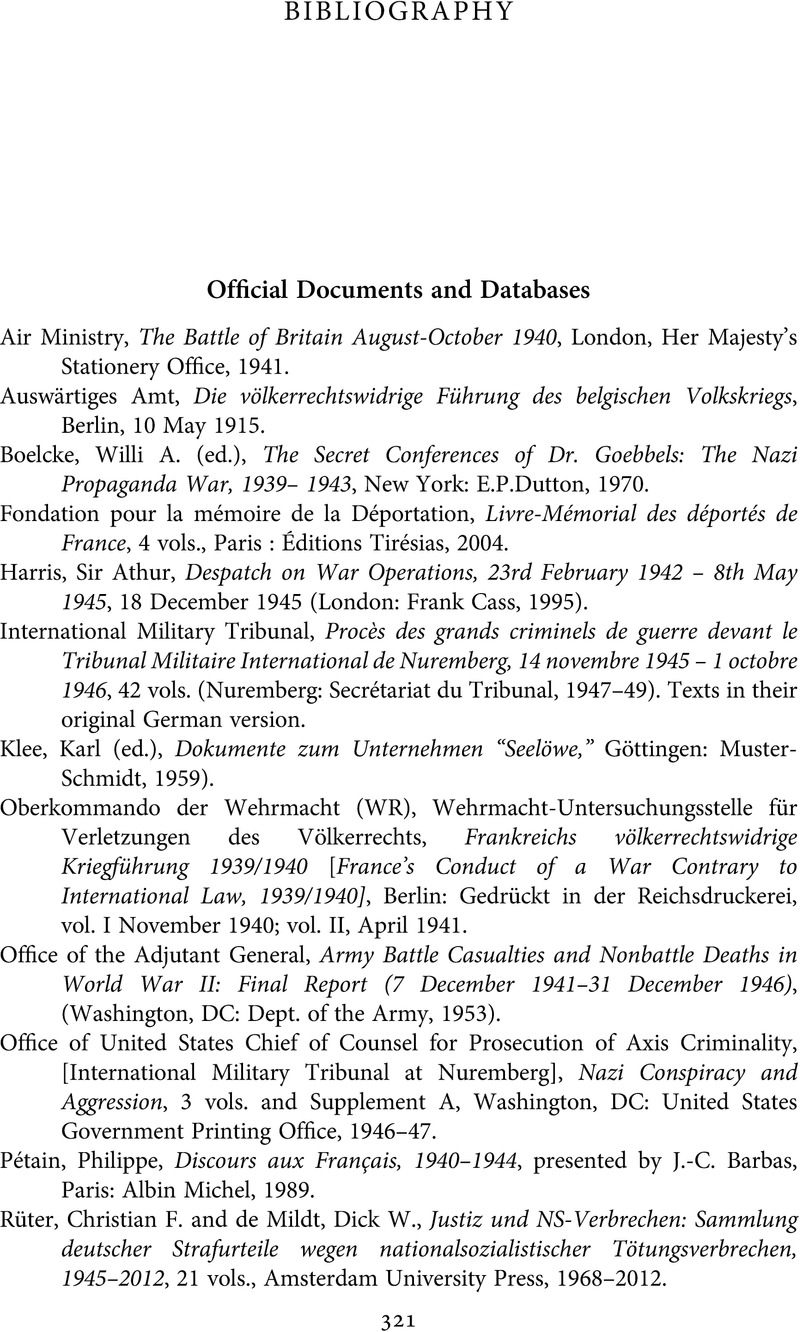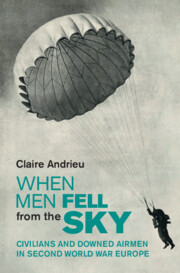Book contents
- When Men Fell from the Sky
- Studies in the Social and Cultural History of Modern Warfare
- When Men Fell from the Sky
- Copyright page
- Contents
- Illustrations
- Maps
- Charts
- Numerical Tables
- Acknowledgements
- Introduction
- Part I Blitz-Invasion in France, or Resistance Crushed
- Part II “Imminent Invasion!”
- Part III The Origins of the Resistance
- Part IV Lynching in Germany, 1943–1945
- Appendix Bombardments and On-the-Ground Responses: Maps and Numerical Comparisons
- Archival Sources
- Notes
- Bibliography
- Index
- References
Bibliography
Published online by Cambridge University Press: 21 March 2023
- When Men Fell from the Sky
- Studies in the Social and Cultural History of Modern Warfare
- When Men Fell from the Sky
- Copyright page
- Contents
- Illustrations
- Maps
- Charts
- Numerical Tables
- Acknowledgements
- Introduction
- Part I Blitz-Invasion in France, or Resistance Crushed
- Part II “Imminent Invasion!”
- Part III The Origins of the Resistance
- Part IV Lynching in Germany, 1943–1945
- Appendix Bombardments and On-the-Ground Responses: Maps and Numerical Comparisons
- Archival Sources
- Notes
- Bibliography
- Index
- References
Summary

- Type
- Chapter
- Information
- When Men Fell from the SkyCivilians and Downed Airmen in Second World War Europe, pp. 321 - 341Publisher: Cambridge University PressPrint publication year: 2023



